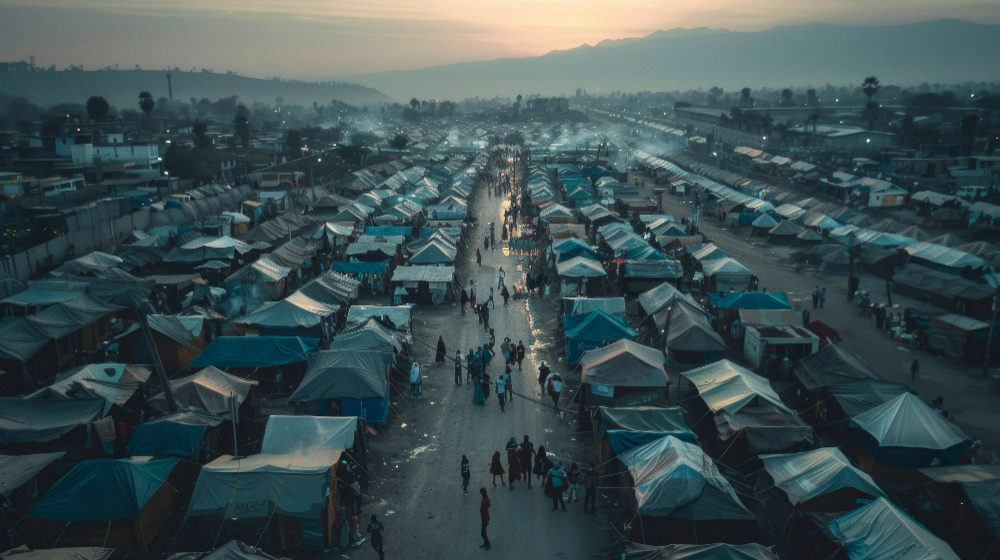
As urbanization skyrockets in Bangladesh, the air quality in cities like Dhaka has declined significantly. This has sparked a rising interest in pollution-free housing near Dhaka—a concept that offers residents a healthier, more sustainable lifestyle away from the city's environmental burdens.
Pollution-free housing refers to residential developments designed to reduce environmental harm while enhancing indoor air and water quality. These homes are often equipped with sustainable materials, renewable energy solutions, and nature-focused designs that promote a better quality of life.
Dhaka ranks among the most polluted cities in the world. Here’s a look at the key issues:
Air Quality: PM2.5 levels often exceed safe thresholds, especially during dry seasons.
Water Pollution: Untreated sewage and industrial waste have contaminated rivers like Buriganga.
Noise Pollution: Continuous honking, construction, and traffic make Dhaka a high-decibel environment.
These challenges have intensified the need for housing options that offer refuge from the urban chaos.
The shift towards eco-conscious living isn't just a trend—it's a necessity. Several factors are driving this demand:
Urban Migration: With more people moving to Dhaka for work and education, the need for healthy living spaces grows.
Health Awareness: Families now prioritize homes that support mental and physical well-being.
Climate Action: Many buyers are conscious of their carbon footprint and want homes that reflect their values.
Pollution-free homes are defined by their ability to minimize exposure to toxins and maximize sustainability. Here are some key traits:
Green Building Materials: Use of bamboo, recycled wood, and non-toxic paints.
Sustainable Architecture: Maximized natural light, ventilation, and green spaces.
Air & Water Purification Systems: Integrated filters ensure safe breathing and clean water.
Energy Efficiency: Solar panels and LED lighting reduce dependency on fossil fuels.
Several suburban areas around Dhaka offer cleaner environments and room for sustainable development:
| Location | Why It’s Ideal |
|---|---|
| Purbachal | Master-planned township, wide roads, greener spaces |
| Keraniganj | Close to Dhaka but with less pollution and more nature |
| Ashulia | Low-density area, lakes, and greenery |
| Uttara Extension | Modern infrastructure and potential for green homes |
| Savar | Expanding real estate with natural surroundings |
| Factor | Pollution-Free Housing | Traditional Housing |
|---|---|---|
| Air Quality | High (filtered) | Low (exposed to city pollutants) |
| Energy Use | Low (solar, efficient appliances) | High (electricity dependent) |
| Health Benefits | Significant | Minimal |
| Cost | Higher upfront | Lower upfront |
| Long-Term Savings | Higher | Lower |
Several developments are setting a benchmark in green housing:
Purbachal Eco City – Solar-ready homes, rainwater harvesting, open parks.
Bashundhara Green Living – Smart homes with low emission designs.
Savar Harmony Village – Eco villas with nature trails and organic farming.
Keraniganj Urban Forest Project – Tree-lined streets and noise barriers.
Each of these developments includes amenities designed to support a pollution-free lifestyle.
Bangladesh is gradually embracing sustainable development:
RAJUK Initiatives: The capital development authority has set guidelines encouraging green zoning.
Bangladesh Green Building Code: Mandates eco-friendly construction practices in new buildings.
These policies pave the way for more investments in pollution-free housing near Dhaka.
Smart technology enhances the sustainability of green homes:
Solar Panels: Reduce energy costs and dependence on the grid.
Rainwater Harvesting Systems: Ensure water availability and reduce municipal usage.
Smart Ventilation: Controls indoor air quality in real-time.
Motion Sensor Lights: Energy-efficient lighting that activates only when needed.
Living in a clean environment leads to noticeable health improvements:
Respiratory Health: Reduced incidence of asthma and bronchitis.
Mental Health: Peaceful surroundings lower stress levels.
Child Development: Safe air and clean play areas support physical and cognitive growth.
Families especially benefit from the holistic wellness such housing provides.
Though green housing may seem expensive, it offers long-term advantages:
Initial Cost: Typically 10-15% higher than traditional homes.
Operational Savings: Reduced energy and water bills.
Resale Value: High demand and eco-trend increase future property value.
Investing in pollution-free housing near Dhaka is not just ethical—it's financially smart.
Despite the benefits, there are hurdles:
Infrastructure Limitations: Lack of green transport and proper waste disposal in some suburbs.
Cost of Materials: Eco-friendly materials are often imported or limited locally.
Lack of Awareness: Buyers and developers need more education on long-term benefits.
Forward-thinking developers are revolutionizing the housing market:
Krishibid Group Real Estate: Focus on green insulation and solar power.
Sheltech: Integrates rooftop gardens and energy-efficient designs.
Amin Mohammad Group: Building eco townships with mixed-use zoning.
Their innovations make green living accessible to more families.
When looking for a pollution-free home, consider:
Green Certifications: Ensure the builder follows environmental codes.
Natural Ventilation: Check for cross-ventilation and window placement.
Access to Greenery: Look for nearby parks, trees, and water bodies.
Sustainability Features: Prioritize homes with solar, rainwater harvesting, etc.
Eco-living is the future, and here’s what to expect:
Smart Eco-Towns: Combining technology and sustainability.
Urban Forests: Integrating greenery within housing complexes.
Community Gardens: Shared green spaces for organic farming and recreation.
“I moved to Purbachal last year, and my daughter’s asthma symptoms have almost disappeared. The air is fresher, and we feel more connected to nature.” – Mizanur Rahman, Resident of Green Horizon Purbachal.
“Our electric bill dropped by 40% since installing solar panels. Plus, I finally sleep without noise pollution.” – Sharmin Akter, Keraniganj Eco Living.
Choosing pollution-free housing near Dhaka isn’t just about escaping pollution—it’s a commitment to a healthier, sustainable future. With growing support from developers and policies, eco-friendly living is becoming a smart and achievable goal for families looking to thrive outside the urban chaos.